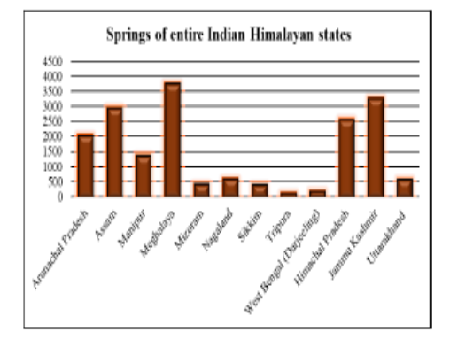
Geographical analysis
Department of Geography & GIS

Department of Geography & GIS

Geographical analysis
DOI: 10.53989/bu.ga.v14i1.24.177
Year: 2025, Volume: 14, Issue: 1, Pages: 15-21
Original Article
Chet Ram1∗
1Assistant Professor, Department of Geography, N.R.E.C. College Khurja, Bulandshahr, 203131, Uttar Pradesh, India
*Corresponding Author
Email: [email protected]
Received Date:12 October 2024, Accepted Date:08 June 2025
Natural springs are the primary source of water for the rural households in the Himalayan region. For many people, springs are the sole source of water. For example, a major proportion of drinking water supply in the mountainous parts of Himachal Pradesh is spring based. This research paper is based on the role of local community in the conservation of natural water springs in Kharahal region of Kullu district of Himachal Pradesh. The main objectives of this research paper are to identify the natural water springs, to study the significance of natural water springs and study the role of the local community in the conservation of natural water springs in the study area. This research paper utilizes both primary and secondary data sources. Primary data was meticulously gathered through an extensive field survey encompassing the entire study region, while secondary data was sourced from authoritative reports such as the Niti Aayog report, Indian Census, and Panchayat office documents. Following data acquisition, a rigorous process of tabulation, compilation, and analysis was conducted using advanced statistical methods, complemented by the creation of maps and diagrams. The maps were developed using Q-GIS software, and diagrams were generated with Microsoft Excel. The study's findings reveal the existence of 71 natural water springs across 10 panchayats within the study area. These springs are integral to the region’s economic activities, cultural practices, and essential for drinking and domestic purposes. As such, local communities are pivotal in the conservation, maintenance, and revitalization of these natural springs.
Keywords: Local community, Kharahal region, Himalaya, Natural springs, Conservation, Q-GIS
© 2025 Ram. This is an open-access article distributed under the terms of the Creative Commons Attribution License, which permits unrestricted use, distribution, and reproduction in any medium, provided the original author and source are credited.
Published By Bangalore University, Bengaluru, Karnataka
Subscribe now for latest articles and news.